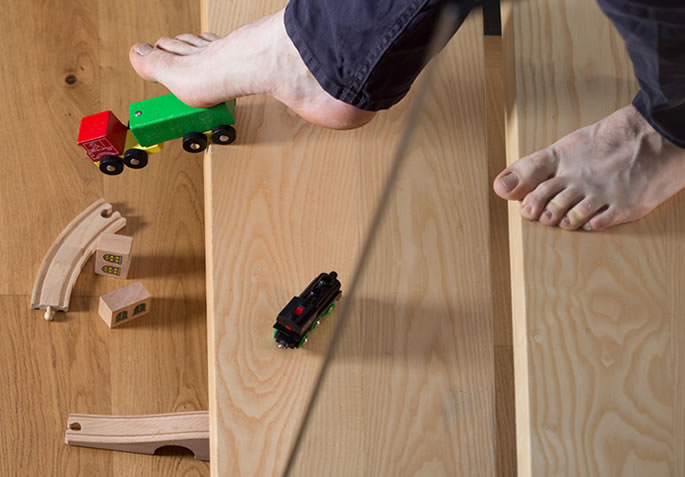

 Quality Awards
Quality Awards

Accidents happen. We’ve all suffered our share. In fact, the Centers for Disease Control and Prevention reports that unintentional injuries are the leading cause of death for Americans under the age of 45. And though our homes are where we feel most comfortable, they’re also where many accidents happen — especially among young children and seniors. To find out the best ways to prevent accidents in the home, we spoke with Dr. Rosemary Szollas, a board-certified occupational-medicine physician and the medical director of occupational medicine for St. Luke’s University Health Network in Allentown, Penn. Here she shares her expert advice on five common in-home risks.
Falls
Falls are among the most common household accidents, especially for young children and the elderly, and they can lead to serious injuries like concussions, broken bones and even death. “The best way to prevent falls is to use extra caution around the house,” Szollas said. “Install assistance devices like grab bars in showers for older people, or gates around stairs in houses with young children.” Other suggestions include using non-skid rubber mats in kitchens and bathrooms, and keeping floors clear of tripping hazards like toys or shoes.
Cuts
Many household accidents happen in the kitchen, with minor cuts being the most common. To avoid cuts, keep knives sharp (it’s easy for a dull knife to slip), only use knives at the cutting board instead of carrying them around the kitchen, and keep them stored securely in a knife block when not it use. “Also maintain a first aid kit for those occasional minor injuries,” Szollas said. “And be sure to check it regularly to make sure everything is up-to-date, and replenish used items like bandages and alcohol.”
Poisoning
Children are especially prone to accidental poisoning in the home because they might ingest medications or cleaning supplies found in unlocked cabinets. But adults are also at risk of poisoning through exposure to substances like carbon monoxide. “Even something as simple as dish detergent can be toxic to children,” Szollas said. “To prevent accidental poisoning or exposure in the house, make sure cabinets are fitted with childproof locks, and regularly test the batteries in your home’s carbon monoxide alarms.”
Burns and fire safety
Certainly the kitchen is the most obvious spot for accidental burns to occur, but the stove is not the only place in the house where you should watch out. “Make sure the temperature on your water heater is below 120 degrees, or you may end up getting scalded in the shower or sink,” Szollas said. “In the case of fire, it’s important to not only have working and regularly tested smoke alarms in every room, but also fire extinguishers and an escape route that the whole family understands.”
Drowning
Drowning causes more than 30 percent of all unintentional injury deaths among children aged 1 to 4, and most of those happen in home swimming pools. “If you have a swimming pool, make sure it has a fence with a gate that locks,” Szollas said. “And no matter whether it’s a swimming pool or a bathtub, it’s vitally important that you never leave a child unsupervised around water.”